If you are familiar with my personal blog, you’ll recall that this past summer I took a stab at growing luffas for the first time ever. This picks up where that posts left off at: the harvest and how to process luffa. There are lots of places and advice you can go to on the Internet on how to accomplish this. Just plug “how to harvest luffa” into your favourite search engine and they’ll show you. You’ll see that there are a few different ways to harvest and process luffa so you can use it. Here is one seen in the video below:
However, they don’t really explore the how or why behind it. For this experiment, I purposely didn’t follow the rules exactly. I picked the luffa in late fall, just after the first frost. The vines were still green, so were the luffa pods. My reason for doing this is that in the fall here in Indiana we often have lots and lots of rain. The luffa were already starting to show mould, so I wanted to get them in out of the nasty weather before they got worse. This is where the idea of performing this experiment really began to form.
Harvest away!
I slogged my way through the soggy ground to pick up a nice pile of luffa. The big ones are good for scrubbing, while the very small ones are good for cooking. (We made them into a stir-fry!)
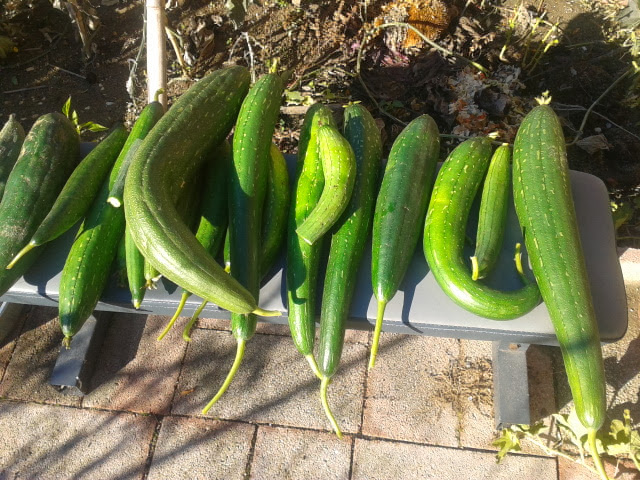
Now, this is really where the trouble all started. It doesn’t matter which one of the how-to guides you go to on harvesting luffa, they will all tell you to wait until they are nearly dead on the vine. Fair enough, but mine started to mould, so I didn’t. Now, I had to figure out what to do with them while they dried. Leaving them outside was out, so I brought them in, put them on dehydrator shelves, and let them sit for the next few months until they were dry and light as air.
To peel, crush, or soak?
If How-To is to be believed, I choose wisely sans leaving it on the vine. Now, I should soak it. Or should I? The video above shows the guy just peeling the papery skin off. This made me wonder: Is there a difference between methods of removing the skin? Only one way to really find out, eh?
Peel
For the first one, I just twisted off the flower end, dumped out as many seeds that would come out, then began trying to peel back the skin. If, like me, you let it dry to the near-hard-as-a-rock feeling, it’s hard going. And, it’s sharp. I cut up my fingers a little trying to do this, and in the end this is what it looks like:
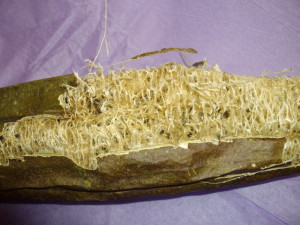
The peeling process itself is not that awesome. The fibre holds on tightly to the skin so it comes off in very small sections. It also pulls up on the fibres so you don’t get a nice, smooth look to it. (Next year I’ll try this before it’s so dry and see if there is a difference.)
Soak
Lesson learnt. Peeling is not the best way to go. Not only is it difficult, but it also makes a mess because of all the small bits. So, on to the second option: soaking. The soaking supposedly softens the skin a little and loosens the fibres holding the skin and dried out flesh together. So, I filled up the sink with tepid water and rolled the luffa in them a few times (not really soaking) to get it moist before giving it ago.
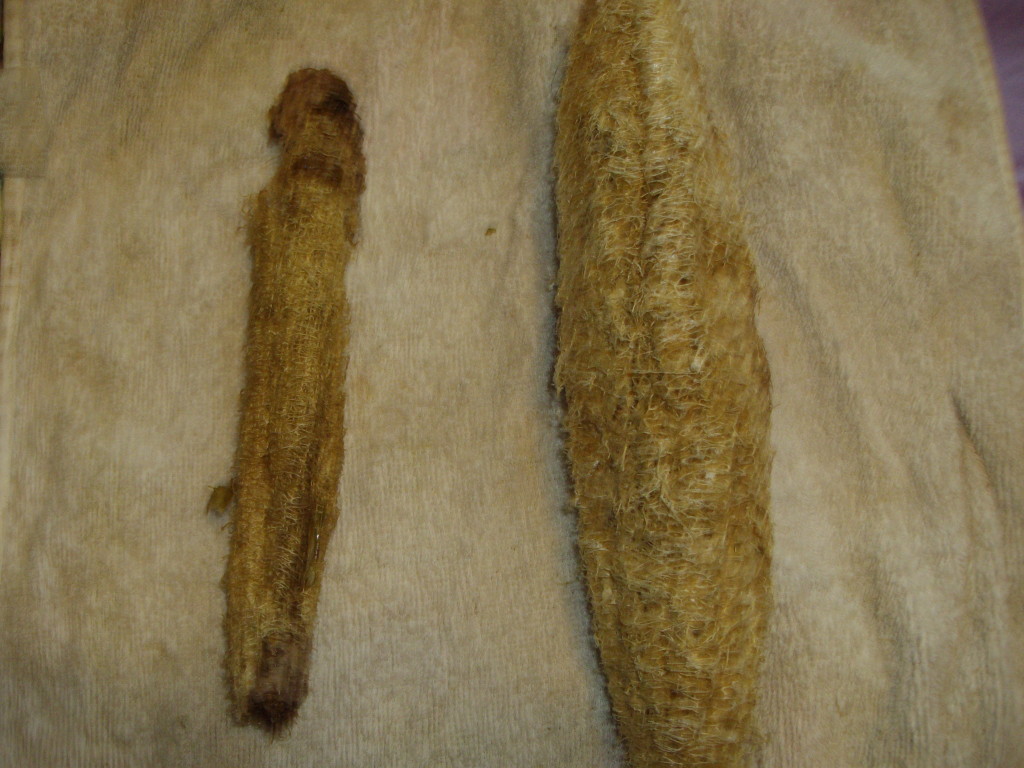
Dipping before stripping did a lot of good, actually. It was far easier to peel the skin off. The downside to this is that the sap left in the luffa becomes slimy. It feels like you just walked the luffa with a moisturising soap, making it a little on the slick side. On the other hand, it doesn’t hurt to peel nearly as much.
The difference between the fibres was pretty obvious too. The luffa that was dipped is smoother than the one that wasn’t. This is because the fibres are slightly moistened which allows them to let go of the skin easier and they don’t get pulled up. Despite of this benefit, I wasn’t a huge fan of the slimy feeling, so I came up with another method: crushing and peeling like a boiled egg.
Crush
I’m going to start right off by admitting this is decidedly not the best way to peel a luffa. It’s messy, it dusty, and it cuts up the fingers more than just peeling it does. However, it’s a good stress relief to roll and crush the luffa! That being said, I can further declare that the luffa fibres are not damaged by rough treatment like this. But, what about the results?
The results of crushing and peeling were nearly the same as if you were to just peel the skin off. The fibres pull up slightly so it’s not as smooth as soaking, but they pull up less than just peeling. It is also difficult to do on smaller luffas or ones with a lot of wrinkled skin with deep crevasses.
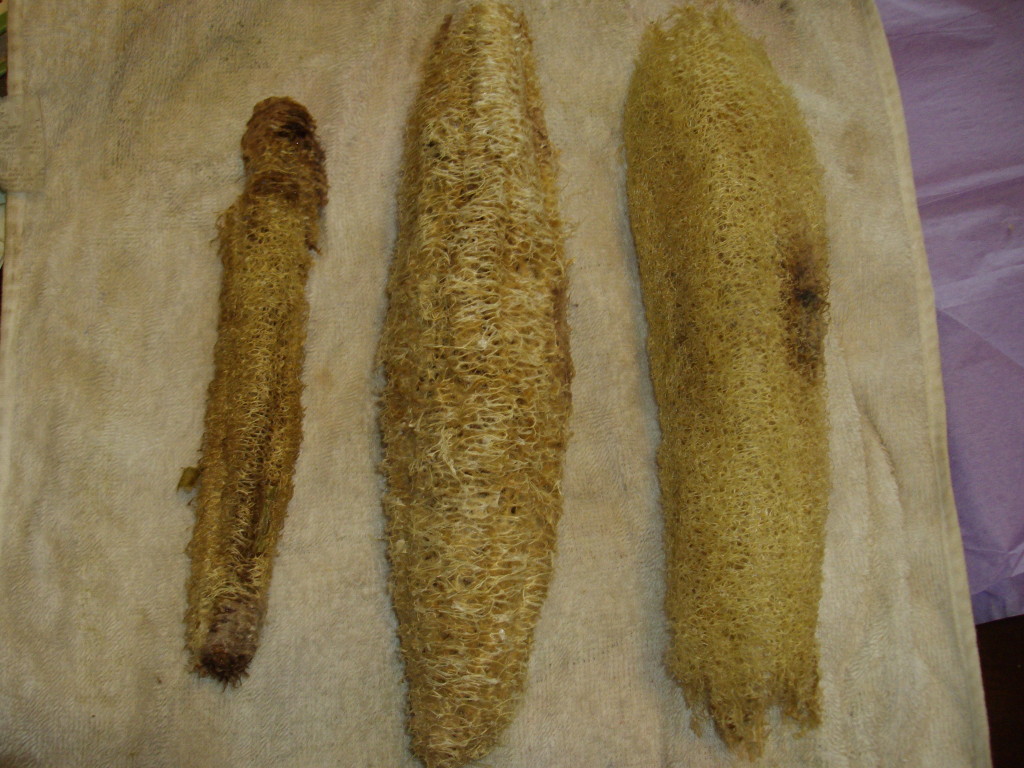
In summary…
- There is a difference between soaking the luffa and not soaking the luffa.
- Peeling and crushing methods result in the fibres not laying smoothly; deal with the slimy feeling of soaking
- Luffa fibres are amazingly tough, so don’t worry about being gentle on them.
- If you must peel the luffa and have any problems with your lungs, you may want to invest in a mask to keep dust and particles out.
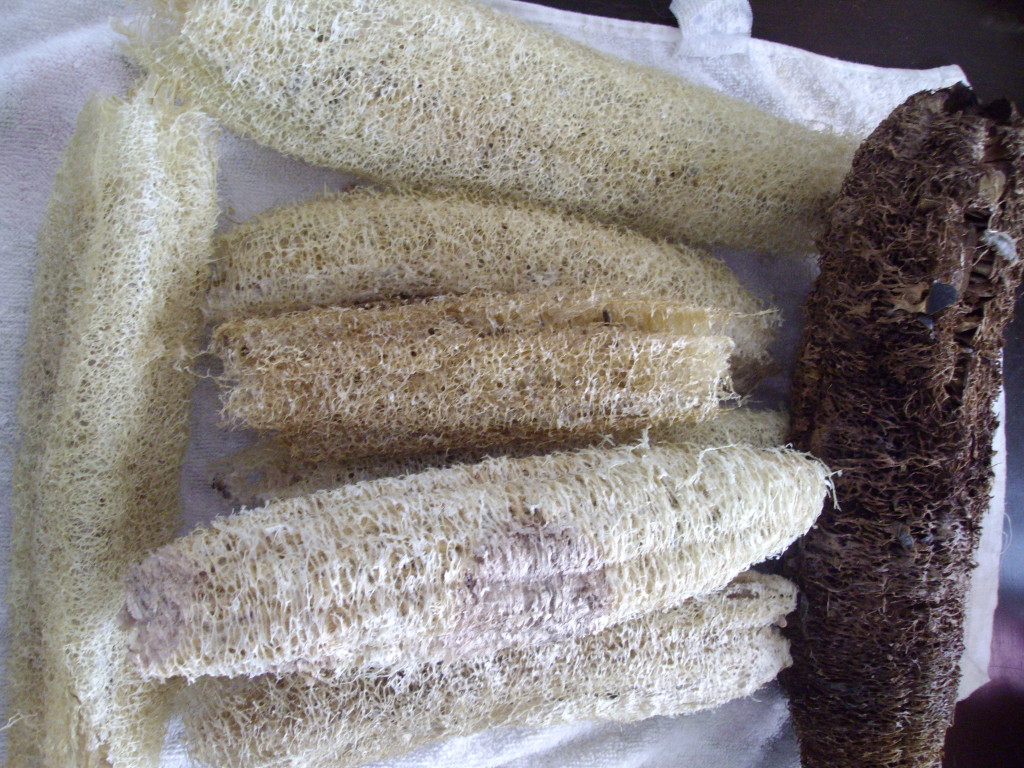
Further research
What kind of good experiment doesn’t have further research questions? None. So, here are the ones I came up with during the course of this home-grown experiment:
- Is there a difference between large and small luffas?
- What would the difference have been if I had left them on the vine?
- What are those brown spots?
- Are those brown spots the same that makes that one luffa dark brown?
- Were these mature enough to produce seeds that will grow next year?
Your turn to be a scientist.
Do you have any questions or suggestions about what I can do next time? If so, leave your questions in the comments! Do you have a suggestion about doing the experiment differently? If so, leave your peer review in the comments.
Do you have some luffa at home you can experiment with and answer these questions? Take some pictures and write up your results. If you want to submit your research to us, then send me a message at gconyers @insanitek .net (remove the spaces to prove you’re not a ‘bot).
Audience participation is always welcome in science — even if you find this experiment 20 years from now.
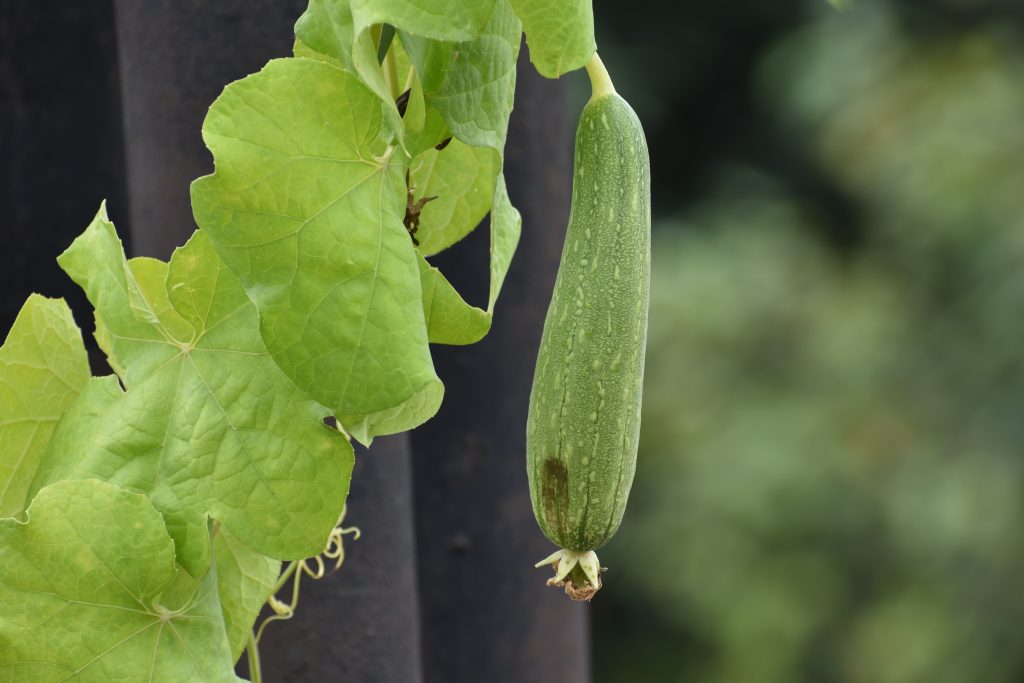
I peel my loofah green fresh off the vine yea it’s slimy. I’m wondering if the slimy soap like stuff is good for anything. they peel easy I pick them soon as there large and solid feeling and peel right away and wash then dry. easy to peel , they stay nice and clean looking no dust. after this and they dry I simply shake the seeds out. if you don’t like the slime I would recommend wearing rubber gloves